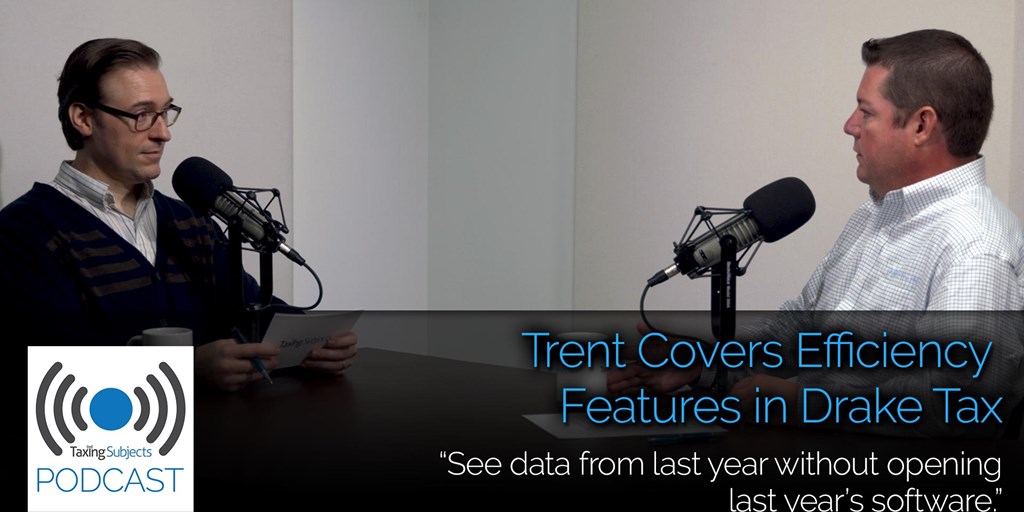
by r Hampton | Jul 18, 2019 | Tax News
Having tax software that improves workflow efficiency can be one of the keys to a successful filing season. To learn about the efficiency features in Drake Tax, we invited Drake Software Education Specialist Trent Fouts to the studio. In this episode, we discuss features that affect data entry, client management, scheduling, and more.
– Story provided by TaxingSubjects.com

by r Hampton | Jul 17, 2019 | Tax News
tax tips | April 26, 2019 | By Susannah McQuitty

If you do it the healthy way, growing your tax refund takes time and attention—but probably not as much as you think. Since you’ve finished your taxes for the year and have a good idea of where you sit financially, there’s no better time to form an action plan to save money and boost your refund next year.
Where do refunds come from?
Time for some Tax Knowledge 101. For anyone who is still mystified by tax refunds and why they may fluctuate from year to year, let’s break out the basics.
Every American citizen is taxed on the money they make. To make regular tax payments throughout the year, W-2 wage earners have a portion of their income withheld by their employer and sent to the IRS each pay period. Those withholdings are added up and compared to your tax bill: If you didn’t pay enough throughout the year, you have to send the remaining money to the IRS to cover the balance; if you paid too much, you get a tax refund.
Think of your refund like the change you get at the grocery store when you use a $20 bill to buy a gallon of milk and a loaf of bread. The government isn’t giving you its money (unless you qualify for a refundable credit, but that’s a topic for another day). You’re just getting back the change for what you overpaid.

How do I boost my refund?
Getting a bigger refund is simple: Pay more money to the IRS throughout the year. Sounds a bit odd, though, doesn’t it? It’s important to realize the balance between the money in your pocket per paycheck and the number on your tax refund check.
For some people, a bigger refund isn’t worth having less money throughout the year, and that’s totally fine. After all, that money can be working for you in the form of an interest-bearing savings account, rather than for the government. For others, stashing away a little per paycheck to receive at the end of the year is a great plan, and that’s fine too.
Whichever you choose, you can control just how much you pay or don’t pay during the year by adjusting your withholding amount per paycheck.
How do I change my withholding?
Employees change their withholding amount by filling out a Form W-4 and turning it in to their employer. If you want a bigger refund, you can list an additional amount to be withheld from your paycheck on Line 6. If you want a bigger paycheck, simply adjust your allowances accordingly.
Adjusting your refund up or down is a little different if you’re a freelancer—simply pay more per quarterly estimated payment for a bigger refund. If you want more money in your pocket throughout the year, pay only what you estimate owing.
File with 1040.com to get all your tax breaks
The last and easiest thing you can do to grow your refund is to file with 1040.com next year, because we’ve developed a process to help you find all the tax breaks you qualify to get. You don’t have to work harder—we do that for you—and your tax savings get boosted (with any applicable tax breaks like those refundable credits we mentioned).
You can create an account for free so you don’t forget to come back next year and grow your refund the easiest way possible: by filing with 1040.com!
– Story provided by 1040.com
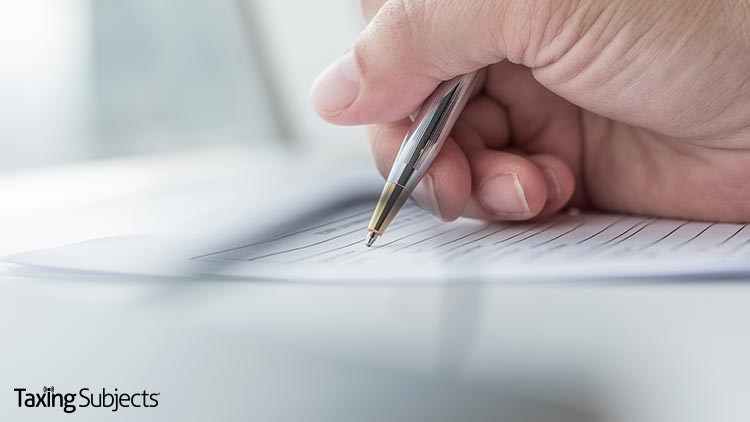
by r Hampton | Jul 16, 2019 | Tax News
The Internal Revenue Service has published a draft of a new tax return targeted at senior citizen taxpayers. The Form 1040-SR, U.S. Tax Return for Seniors, is posted along with a new draft of Schedule R, “Credit for the Elderly or the Disabled.”
Accounting Today reports the new 1040-SR features larger font sizes and removal of shading around some of the boxes – features meant to improve contrast for taxpayers with impaired vision. Accounting Today says the new form was unveiled by an IRS official during the National Harbor, Md., IRS tax forum.
Along with the senior citizen forms, the IRS has also posted a new draft of the Form 1040, aimed at next tax season.
Forbes reports that changes to the 1040 include moving the signature box to page 2, spaces for entering the names of a spouse and children, the removal of the checkbox for health care coverage since it’s no longer mandatory, separate lines for the Earned Income Credit, Additional Child Tax Credit and American Opportunity Credit, and some other line items changing position.
In addition, the IRS also published a draft of its updated version of Schedule 2 for the Form 1040. The form was introduced last tax season as an add-on to the abbreviated Form 1040 that recently went into use.
– Story provided by TaxingSubjects.com

by r Hampton | Jul 16, 2019 | Tax News
tax tips | July 12, 2019 | By Susannah McQuitty

Paying taxes on the money you make from eBay, Etsy, Poshmark, and others seems like a touchy subject, doesn’t it? Part of you may want to just take your chances and figure it out as you go along, but why stress over what you don’t know?
Taxes for online sales isn’t actually that hard—and some people may not even have to pay taxes at all. It comes down to what you’re selling, how much you’re making, and why.
But why not make it even simpler? Let’s look at the three main reasons people sell online and talk straight about what you need to know for taxes.
Selling used and personal items for a couple bucks
Maybe you need to get rid of junk, or maybe you’re doing a true-blue Dave Ramsey cleanse—whatever your motivation, sorting through personal belongings and slating some for your online store can bring in a pretty penny for your efforts.
When you sell personal used belongings for an amount that’s less than you originally paid, you’re in luck: You won’t owe taxes on the money you make. If you use Poshmark to sell a pair of $50 running shoes for $15, you don’t have to pay taxes because the amount you received was less than the original price.
Sure, you won’t be raking in the dough because you’re not selling at a profit, but that amount somewhere between couch money and birthday cash is yours to keep.
Taxes to know:
- As long as you sell your items for less than they cost you, you don’t have to pay taxes on the money you make.
Making back more than you paid (once in a while)
Let’s say you’re getting rid of a painting that cost you $30. An artsy-looking chap strolls by, catches sight of it, and flings his beret into the air for joy. He offers to pay you $200 for the painting, and you take the money. Cha-ching!
You didn’t plan to sell the painting for more than it cost you, so you’re not considered a business. You did, however, have a gain of $170 since you originally paid $30. That $170 is taxable as a capital gain, so when tax time rolls around, you should use Schedule D to report your capital gains and pay taxes accordingly.
Selling for higher than you paid might come up fairly often on eBay, since it’s bidding-based. If you set up an account with the intention of flipping items and selling them for higher than you paid, skip this and go to the next section; if, however, it’s just a happy accident when you get more than you paid, simply report the difference on a Schedule D as capital gains.
Taxes to know:
- Whatever extra income you made will be taxed as a capital gain.
- You can use Schedule D to report capital gains.
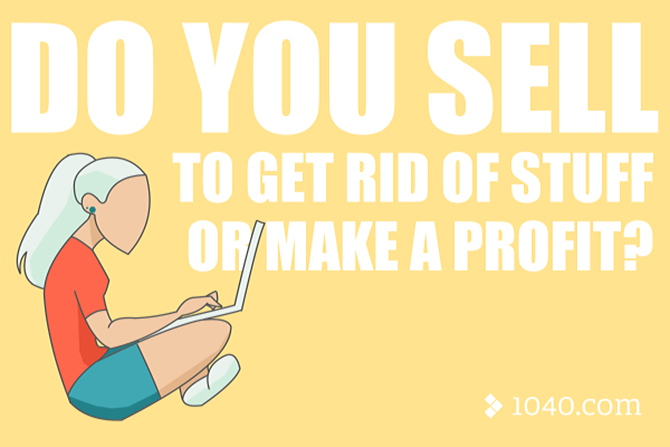
Flipping or creating items as a business
Whether you’re making those thrift store finds work in your favor, creating unique pieces to sell on Etsy, or restoring memorabilia to sell on eBay, running a storefront to turn a profit means you’re in the big league now.
Even if it’s just something to do on the side of your day job, congratulations: You are what’s called a “sole proprietor,” which is a fancy way of saying “a person who owns and runs a small business.”
Since your position is a bit fancier, your taxes will be a bit more involved. The key is to keep detailed track of how much you earn (income) and how much it costs to run your business (expenses). At the end of the year, you’ll use Schedule C to report your info and subtract expenses from income. You’ll either break even, make a profit (or net earnings) or suffer a loss (which can get you a tax break on your general income).
The platforms you use to sell will typically track your earnings and the cost of goods sold, but if they don’t, make sure you’re ready to fill in the blanks. Check out our blog post on getting started as a small business or freelancer for more info.
Taxes to know:
- Schedule C is going to be your best friend when you file your taxes—consider it a one-stop shop for everything related to your business.
- After listing your income and expenses on Schedule C, calculate any profit by subtracting your business expenses from your income. If you come up with a negative number, you have a loss.
- If your profit exceeds $400, self-employment taxes will be applied.
- If you have a loss, you can deduct that amount from your taxable income without having to itemize deductions.
So what about sales tax?
Okay, but hold up—you’re selling stuff, so do you have to pay sales tax?
Usually the selling platform you use will collect sales tax and show you a report at the end of the year. The sales tax goes to the state that you run your business from; since you’re operating on the internet, sales tax will go to the state where you live.
Now, sometimes the platform doesn’t handle sales taxes, and in that case, you’re responsible for collecting the tax from your customer and sending the money where it needs to go. For example, eBay will manage sales tax for 27 states by the end of 2019, but sales tax still has to be reported and delivered if your state is not included in that number.
Boiling it all down
Just remember: Taxes for online sales comes down to what you’re selling, how much you made vs. how much you had to spend, and why you’re in the market to begin with.
Sold goods aren’t taxable as income if you are selling a used personal item for less than the original value. If you flip it or sell it for more than the original cost, you have to pay taxes on the surplus as capital gains. If you bought it with the intention of restoring and turning a profit, you’ll have to file Schedule C and possibly pay self-employment taxes.
That just about wraps it up! Hit up the comments with any questions about taxes for your online storefronts, and check out our tax estimator to get a hands-on example of how they will affect your taxes.
– Story provided by 1040.com

by r Hampton | Jul 14, 2019 | Tax News
A North Carolina man has been handed a 12-year prison sentence by a Virginia federal court for a fraud scheme that included tax charges. The Asheville Citizen-Times reports that Byron Hale Delavan, 63, was found guilty of some 35 charges including conspiracy, tax fraud, and money laundering.
The case was tried in the Eastern District of Virginia federal court. Delavan was accused of carrying out his scheme in the Tidewater, Va., area and bilked the federal government out of more than $400,000 in taxes.
Prosecutors said Delavan carried out a number of criminal schemes including a Ponzi-type investment operation and tax fraud that led to losses of over $1.5 million.
Clients paid Delavan up to $12,000 to get fraudulent losses that were used to offset income on their tax returns, prosecutors said. Delavan then deducted business bad debts from non-operational entities he controlled as if the clients were involved, the Citizen-Times reported.
Delavan also allegedly secured business loans and investments—some from his own clients—that were used for his personal expenses, which included repayment of prior clients and private school tuition.
– Story provided by TaxingSubjects.com

by r Hampton | Jul 8, 2019 | Tax News
The IRS announced that more Ohio taxpayers may be eligible to receive tax relief following the devastating tornadoes that swept across the state at the end of May. As of July 3, victims in Mahoning county have been added to the list of taxpayers who may qualify.
As the agency noted, they are able to provide tax relief for natural disaster victims following a presidential disaster declaration: “The declaration permits the IRS to postpone certain deadlines for taxpayers who reside or have a business in the disaster area. For instance, certain deadlines falling on or after May 27, 2019 and before Sept. 30, 2019, are granted additional time to file through Sept. 30, 2019.”
Taxpayers benefitting from tax relief will similarly not face penalties associated with missed deadlines. “Penalties on payroll and excise tax deposits due on or after May 27, 2019, and before June 11, 2019 will be abated as long as the deposits were made by June 11, 2019,” the IRS wrote. In fact, any late notices beneficiaries receive should be reported to the IRS.
Who qualifies for tax relief?
Following a natural disaster declaration, the IRS will continue to update the list of counties that may qualify for relief as they receive information from FEMA officials. As of the latest update, taxpayers and businesses in the following counties may qualify for tax relief:
- Auglaize
- Darke
- Greene
- Hocking
- Mercer
- Mahoning
- Miami
- Montgomery
- Muskingum
- Perry
- Pickaway
As when any tax relief is issued, the IRS clarified who may be eligible to receive tax relief: “Taxpayers considered to be affected taxpayers … include individuals who live, and businesses (including tax-exempt organizations) whose principal place of business is located, in the covered disaster area.”
While those clearly identified as qualifying taxpayers do not need to apply for tax relief, those who were affected by the storm but live outside the designated relief areas will need to apply with the IRS by calling 866-562-5227.
Source: OH-2019-01
– Story provided by TaxingSubjects.com

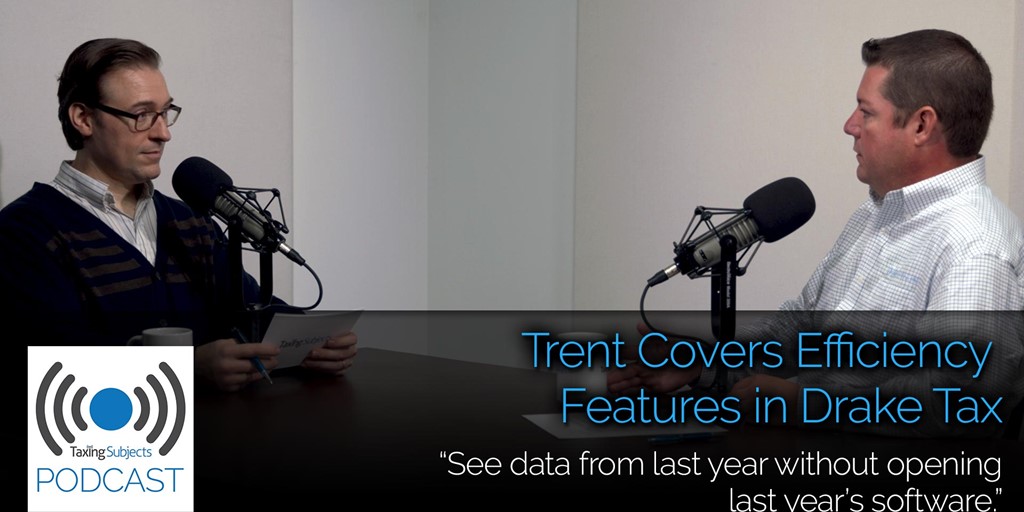
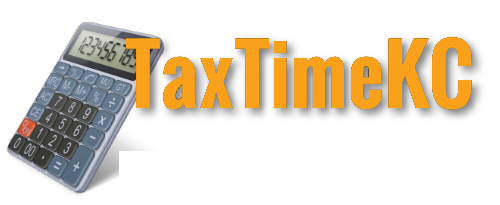













 TAXTIMEKC
TAXTIMEKC